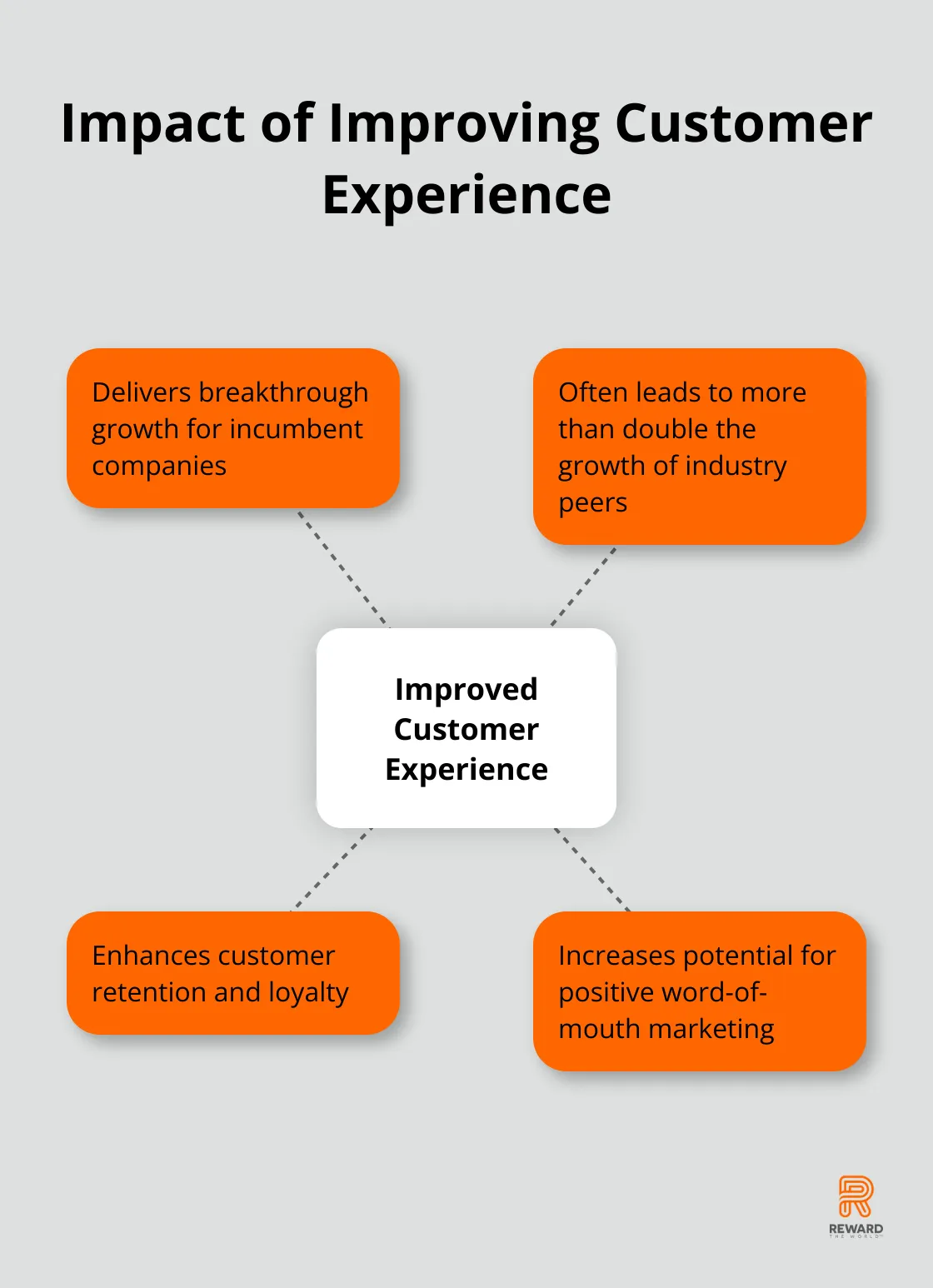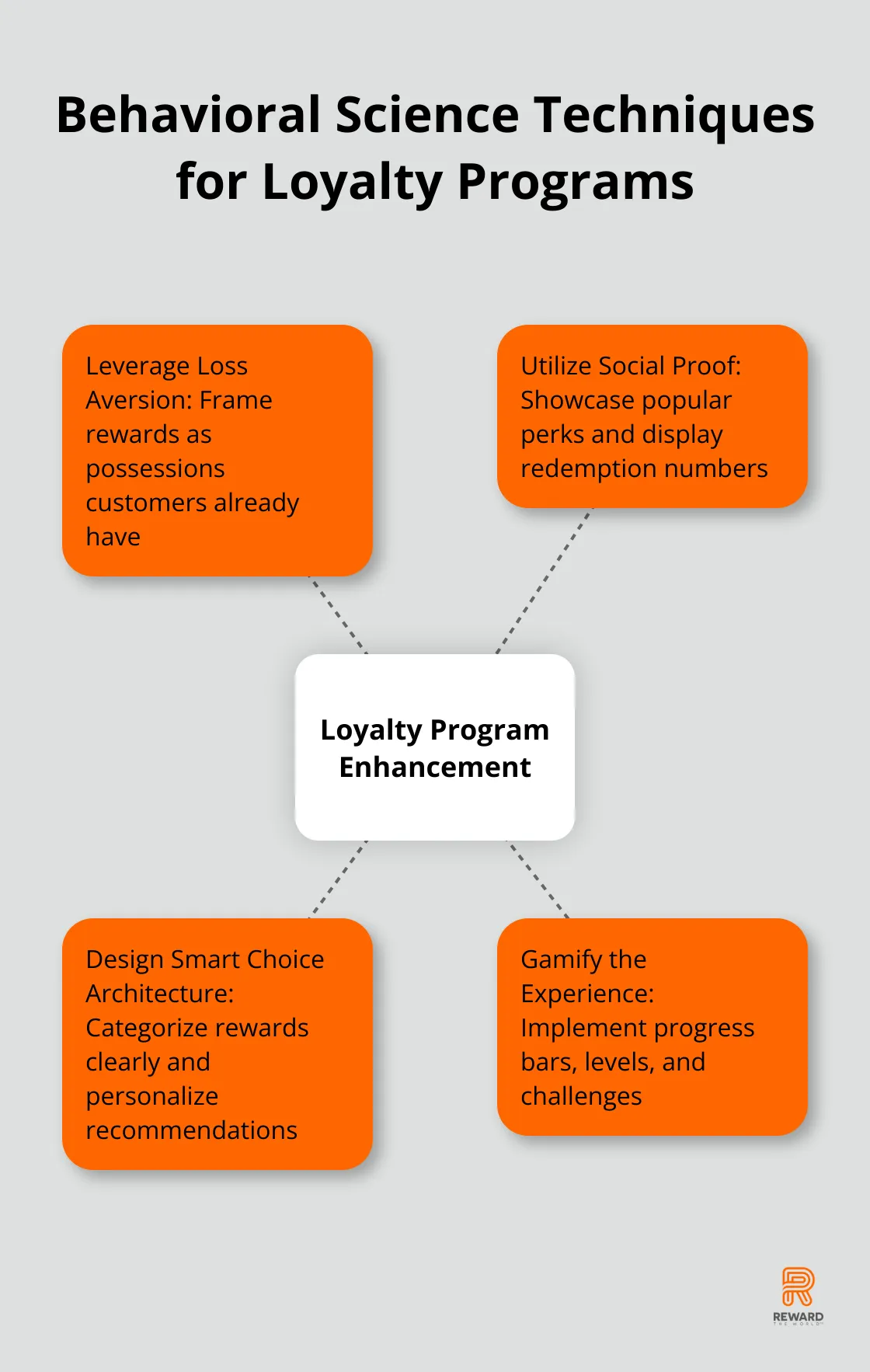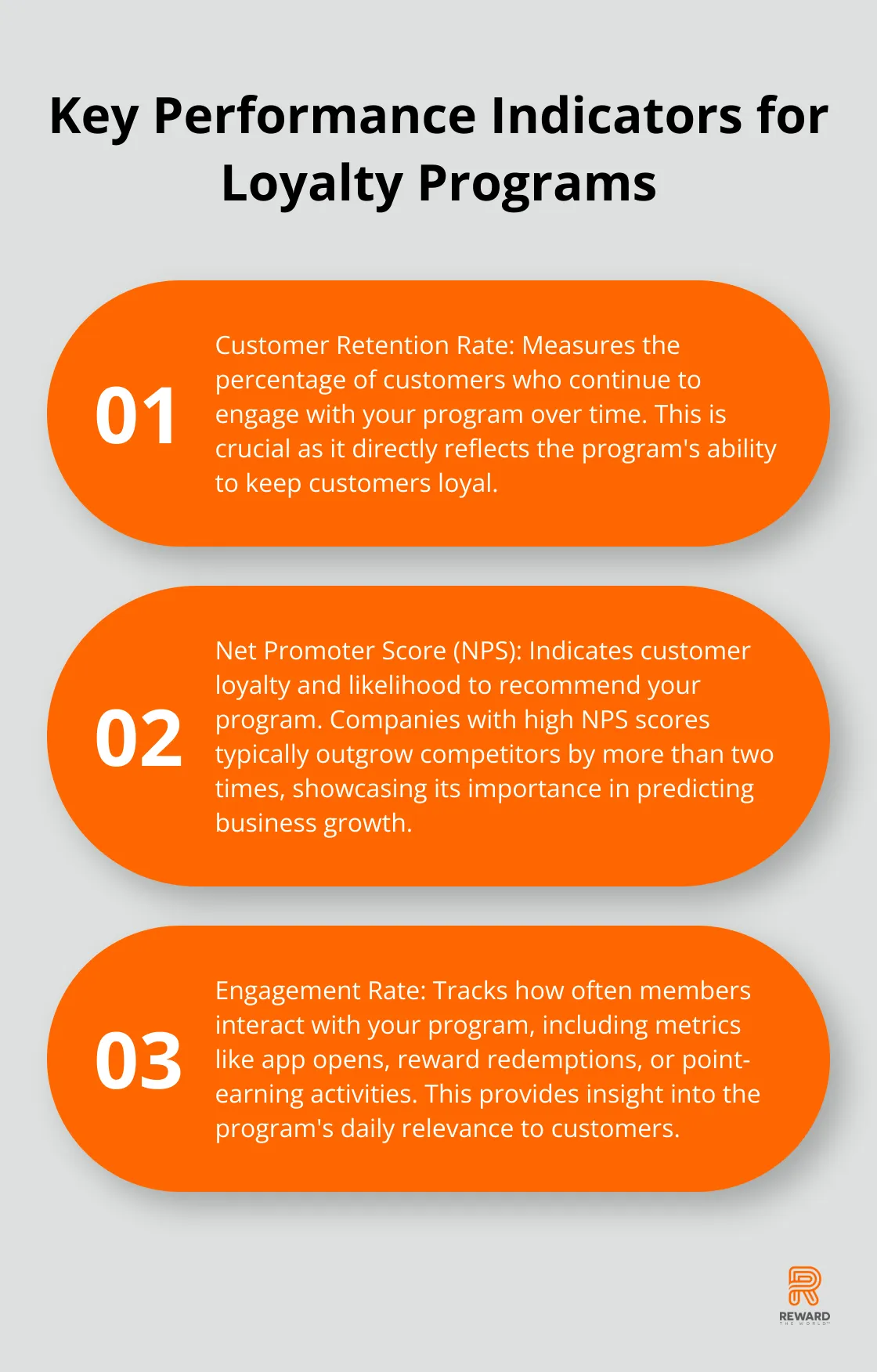
At Reward the World, we’re always looking for innovative ways to enhance loyalty programs. Behavioral science offers a goldmine of insights that can revolutionize how we approach customer retention and engagement.
By understanding and applying behavioral nudges, businesses can make small changes that yield significant results in their loyalty strategies.
In this post, we’ll explore how behavioral science principles can be leveraged to create more effective, engaging, and profitable loyalty programs.
What Drives Customer Loyalty?
The Evolution of Loyalty Programs
Behavioral science has transformed our approach to customer loyalty. Points and perks no longer suffice; understanding the psychology behind customer retention now takes center stage.
The Science of Customer Decisions
Behavioral science in loyalty programs studies and influences customer decisions. It’s the catalyst that transforms one-time buyers into lifelong fans.
McKinsey & Company’s research reveals that improving the experience of existing customers can deliver breakthrough growth for incumbent companies-often more than double that of their industry peers. This highlights the potential impact on business growth.

Key Psychological Principles
Several fundamental principles drive customer behavior in loyalty programs:
- Reciprocity: Customers feel compelled to reciprocate when they receive something (e.g., welcome bonuses prove highly effective).
- Loss Aversion: People dislike losing more than they enjoy winning. Framing rewards as something customers already possess can motivate action.
- Social Proof: Others’ actions influence us. Displaying program membership numbers can boost sign-ups.
Strategic Choice Presentation
Behavioral science not only explains behavior but also shapes it. Strategic choice presentation guides customers towards decisions beneficial for both them and the business.
The Starbucks app exemplifies this concept. Its progress bar shows customers how close they are to their next reward. This clear progression motivates customers to increase their spending to unlock additional perks.
Personalization: The Game-Changer
Loyalty programs can’t adopt a one-size-fits-all approach. Recent data suggests that personalization plays a crucial role in digital marketing strategies.
Tailored incentives can dramatically increase engagement. Platforms that offer rewards across numerous categories (like Reward the World with its 60 million+ options) allow businesses to cater to each customer’s unique preferences.
Behavioral science provides powerful tools to elevate your loyalty program from good to exceptional. The next section will explore specific techniques you can implement immediately to supercharge your loyalty strategy.
How Behavioral Science Supercharges Loyalty Programs
Leverage Loss Aversion for Retention
Loss aversion can significantly impact customer experience by influencing decision-making, satisfaction, and loyalty. Frame rewards as possessions customers already have. Instead of “Earn 500 points for a reward,” try “Don’t miss your reward – you’re already halfway there with 250 points!”
A study found that framing rewards as a head start increased loyalty program participation by 20%. This simple language shift can boost engagement significantly.
Showcase Popular Perks
Social proof influences decisions strongly. When customers see others benefiting from your loyalty program, they’re more likely to join and participate. Highlight popular rewards and display redemption numbers.
Nearly 95% of consumers read online reviews before making a purchase. Apply this concept to your loyalty program. Display member testimonials or feature a “Most Popular Rewards” section.
Design Smart Choice Architecture
Choice architecture involves presenting options to influence decision-making. Amazon’s recommendation engine exemplifies effective choice architecture.
Categorize rewards clearly in your loyalty program. Highlight options aligning with each customer’s preferences. This approach simplifies decisions and increases satisfaction. (Platforms offering millions of reward options excel at personalized recommendations based on user behavior.)
Gamify the Loyalty Experience
Gamification transforms loyalty from mundane to exciting. Progress bars, levels, and challenges tap into our competitive instincts and achievement desires.
Starbucks’ rewards program demonstrates this well. Their app’s progress bar, showing customers’ proximity to their next reward, led to a 26% increase in customer spending after joining the program.
Implement similar elements in your program. Create tiered status levels, offer bonus points for specific actions, or introduce limited-time challenges. These game-like features keep members engaged and motivate frequent participation.

The application of these behavioral science techniques creates a loyalty program that not only rewards customers but also taps into their psychological drivers. The next section will explore how to measure the impact of these strategies and ensure your program delivers tangible results.
How to Measure Loyalty Program Success
Key Performance Indicators for Loyalty
Measuring the impact of behavioral science in loyalty programs is essential for strategy optimization and ensuring a positive return on investment. Businesses should focus on specific metrics to gauge the effectiveness of behavioral interventions.
Customer retention rate stands out as a fundamental KPI, showing the percentage of customers who continue to engage with your program over time. Despite increased customer success investments, net revenue retention rates have declined for 75% of software firms in a recent Bain survey.
The Net Promoter Score (NPS) measures customer loyalty and likelihood to recommend your program. Companies with high NPS scores typically outgrow competitors by more than two times (as reported by Bain & Company).

Engagement rate indicates how often members interact with your program. This can include metrics like app opens, reward redemptions, or point-earning activities.
Success Stories in Loyalty Programs
Several companies have applied behavioral science principles to their loyalty programs with impressive results. The endowment effect can be used to influence buyer decisions and boost conversion rates.
Sephora’s Beauty Insider program uses a tiered system that appeals to customers’ desire for status and exclusivity. This approach has led to the program scaling customer engagement and driving unparalleled success in the beauty industry.
Data Analysis Tools for Loyalty Programs
To track and analyze behavioral data effectively, businesses need robust analytics tools. Google Analytics can provide insights into customer behavior on websites or apps. More specialized tools like Mixpanel or Amplitude offer deeper analysis of user interactions and engagement patterns.
For loyalty programs specifically, solutions like Reward the World offer built-in analytics dashboards. These tools can track redemption rates, popular rewards, and member engagement levels, allowing businesses to make data-driven decisions about their loyalty strategies.
A/B Testing for Program Optimization
A/B testing is a powerful method for measuring the impact of behavioral interventions. This approach allows businesses to compare different versions of program features or communications to determine which resonate best with their audience. Tools like Optimizely or VWO can facilitate these experiments.
Continuous Improvement through Data
The key to successful measurement lies in consistency and adaptability. Regular review of metrics and adjustment of strategies based on data will help keep customers’ needs at the forefront of loyalty program design. Try to implement a cycle of continuous improvement (measure, analyze, adjust, repeat) to maximize the effectiveness of your loyalty program.
Final Thoughts
Behavioral science has transformed customer loyalty programs. Businesses can now create more engaging and profitable loyalty strategies through psychological principles. Behavioral nudges influence customer decisions subtly yet significantly, which leads to increased retention and overall program success.
The future of loyalty programs will likely involve more sophisticated applications of behavioral insights. Artificial intelligence and machine learning will personalize experiences and predict customer behavior. Emotionally engaging loyalty initiatives will foster deeper connections between brands and customers.
Businesses should analyze current customer data and implement small-scale behavioral interventions to improve their loyalty programs. Reward the World offers a comprehensive solution with vast reward options, multi-language support, and powerful analytics. This platform allows businesses to implement and optimize behavioral science strategies in their loyalty initiatives.
